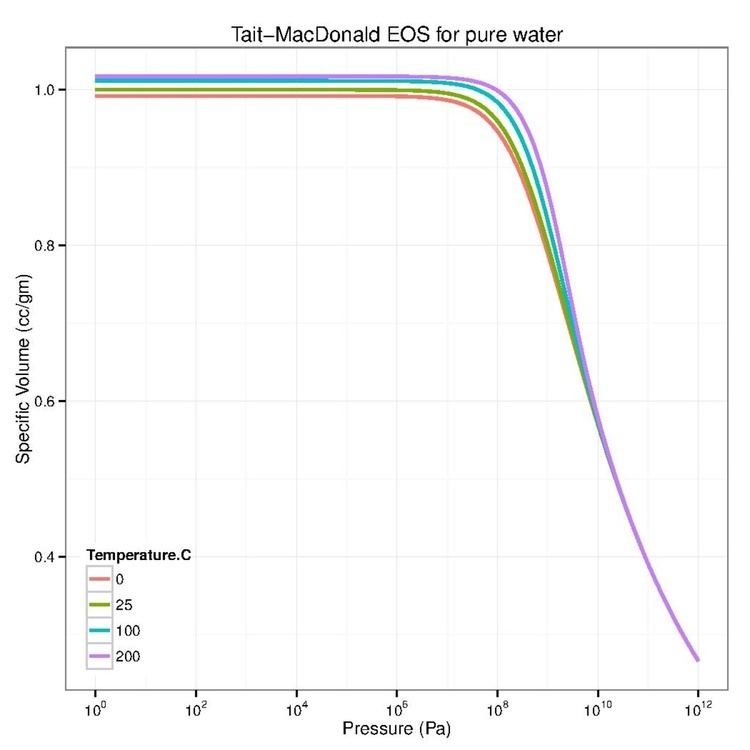 | ||
In fluid mechanics, the Tait equation is an equation of state, used to relate liquid density to pressure. The equation was originally published by Peter Guthrie Tait in 1888 in the form
Contents
- Popular form of the Tait equation
- Pressure formula
- Bulk modulus formula
- Murnaghan Tait equation of state
- Tumlirz Tammann Tait equation of state
- References
where
Popular form of the Tait equation
Around 1895, the original isothermal Tait equation was replaced by Tammann with an equation of the form
The temperature-dependent version of the above equation is popularly known as the Tait equation and is commonly written as
or in the integrated form
where
Pressure formula
The expression for the pressure in terms of the specific volume is
Bulk modulus formula
The tangent bulk modulus at pressure
Murnaghan-Tait equation of state
Another popular isothermal equation of state that goes by the name "Tait equation" is the Murnaghan model which is sometimes expressed as
where
Pressure formula
This equation, in pressure form, can be written as
where
Note that this form of the Tate equation of state is identical to that of the Murnaghan equation of state.
Bulk modulus formula
The tangent bulk modulus predicted by the MacDonald-Tait model is
Tumlirz-Tammann-Tait equation of state
A related equation of state that can be used to model liquids is the Tumlirz equation (sometimes called the Tammann equation and originally proposed by Tumlirz in 1909 and Tammann in 1911 for pure water). This relation has the form
where
The Tumlirz-Tammann version of the Tait equation for fresh water, i.e., when
For pure water, the temperature-dependence of
In the above fits, the temperature
Pressure formula
The inverse Tumlirz-Tammann-Tait relation for the pressure as a function of specific volume is
Bulk modulus formula
The Tumlirz-Tammann-Tait formula for the instantaneous tangent bulk modulus of pure water is a quadratic function of
